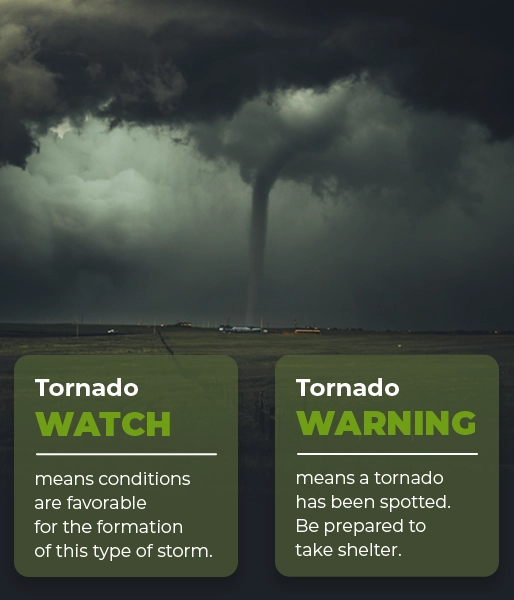- I Would Like To
I WOULD LIKE TO...
- Residents
- Government
GOVERNMENT
- Other Agencies
OTHER AGENCIES
- Municipalities
- 150th Anniversary

Tornadoes are nature’s most violent storms. They appear as a rotating, funnel-shaped cloud that extends to the ground with whirling winds that can reach 300 mph. Damage paths can be in excess of one mile wide and 50 miles long. They most often appear during late spring and summer, usually in late afternoon. They are generally associated with thunderstorm or hurricane activity but can occur alone. As with other weather related emergencies, there is often very little time to prepare for a storm event. By their nature, tornadoes can strike with very little warning so it is essential to prepare a Tornado Survival Kit long before there are any warning of possible strikes.
The kit should include:
What to DO when a tornado is spotted…
What NOT do do when a tornado is spotted…
Tornadoes vary in intensity from a Gale tornado that has wind speeds of 40-72 mph to an Inconceivable tornado that has winds of 319-379 mph. To learn about tornado wind speeds click HERE to view the Fujita Scale.